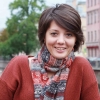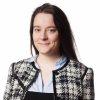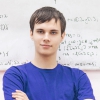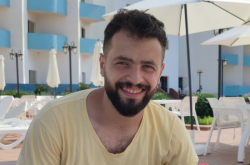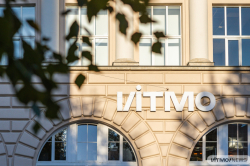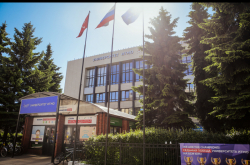ITMO was represented by a few speakers, namely Natalya Bystryantseva, Head of the Creative Light Design (CLD) School, talked about how art and science reinforce one another; Sergei Kovalchuk, associate professor of High-Performance Computing Department, who talked about the predictive modelling systems being created at ITMO University that contribute to a more efficient healthcare system; and world champion in programming, Gennady Korotkevich, together with Lidia Perovskaya, a tutor from the Department of Computer Technologies, who shared the secrets and tricks associated with programming competitions.
The interaction between art and science
IT, Nanophotonics, Sensor Systems and other technologies are becoming part of our daily life — and art as well. Museums are trying to become more interactive; actors are jumping out of movie screens, sculptures come alive with light. Even science itself is being seen as art: scientific festivals and shows attract more and more people, there’s a full-house at technical innovation presentations, and a whole performance can be created using chemistry and physics! Maybe science is the next stage of art? Or maybe art is like something that’s set on «elevating» science?

«Does science need art? What is important for science, the discoveries themselves or their value from the society’s point of view? These are the questions which researchers in the area of Art & Science are trying to uncover. Art & Science is a field that mostly has to do with accumulating and understanding new technological tools in different areas and studying the „technological response“. What we need now is to reconnect man’s purpose with science and culture,» — explained Ms. Bystryantseva in her lecture at the Open University.
New ways of communicating, virtual reality technology, endless stream of information — all these things should bring people together and give purpose to their existence; however, it seems that new technologies are created for their own sake and not for the betterment of humanity. Human beings are slowly becoming more withdrawn from society and «absorbed» in technology, explains Natalya Bystryantseva.
The field of Art & Science is bridging the gap between people, and uses education to explain technology and teach people to live with it. «Why do we go to various art exhibitions? Do we really want to immerse ourselves in art and get a better understanding of it, or do we just want to boast about it on Instagram? We are becoming more desensitized and no longer react to things like we used to. It’s important for us to learn stay true to our senses, and retain things like face-to-face communication, the value of family and the like in the midst of today’s rapid technological development.» — said the Head of the CLD.
Technology that saves lives
While technology may have detrimental effects when it is not geared towards the progress of society, new technologies are still necessary for society to prosper. Through innovation we can produce more food, enhance safety, find new ways to treat previously incurable diseases and predict the behavior of people and different processes. At this Open University session, Sergei Kovalchuk, senior research associate at the eScience Research Institute and Associate Professor in the High-Performance Computing Department at ITMO University spoke about how predictive modelling can help improve the health care system.

He explained that there are many things that are contributing to the worsening of health in the world and the increasing need for healthcare, such as the increase in life expectancy, adverse environmental conditions, and harmful habits. There are two approaches in medicine known as «volume-based» and «value-based». The first focuses on providing as much medical attention as possible to one patient. The second focuses on the importance and quality of medical services. As we know, the healthcare system has limited resources, whether financial, human or simply time. Predictive modelling helps to make these systems more efficient so we can use all these resources more effectively. Through the help of special programs, a large amount of data can be analyzed to predict human behavior, like how a situation would change based on specific conditions, which steps to take to prevent panic, crowding, infection or other dangerous situations. In medicine, this technique can be used for the more effective use of the resources available.
Mr. Kovalchuk talked about ITMO’s collaboration with Federal Almazov North-West Medical Research Centre in creating decision-making support systems. He explained how these systems help doctors treat patients with heart attacks -by shortening ambulance travel time or helping to choose the right treatment much faster. This even includes more accurately determining when surgical intervention is necessary thus reducing the number of operations. More information about the project is here.

Secrets of Programming
The two time world champion in programming and ITMO’s Masters student, Gennady Korotkevich, and tutor of the department of Computer Technologies, Lydia Perovskaya shared the secrets of IT competitions and explained why programming develops the same skills as running hurdles.
If you missed it — you can enjoy watching it in Russian on the YouTube channel at ITMO university.



